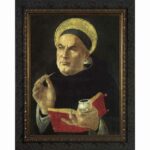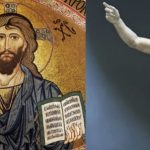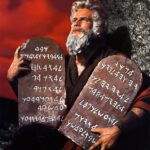A review of The Gospel of Matthew. By R.T. France.
Eerdmans, 2007.
This is the third important conservative commentary on Matthew to appear in the past decade; the other two being by Keener (1999) and Nolland (NIGTC, 2005). These three are massive commentaries (each one over 1000 pages), and taken together they provide the Christian community with excellent study tools for years to come.
Somewhat ‘earlier’ volumes also of great importance include those by Carson (EBC, 1984), Blomberg (NAC, 1992), the two-volume set by Hagner (Word, 1993), and of course the three-volume work of Davies and Allison (ICC, 1988-1997). And France also penned the much shorter commentary on Matthew for the Tyndale series (TNTC, 1985).


France has been a leading Matthean scholar for decades now, and his newest effort is well worth the price of the book. Unlike many recent commentaries, it does not go for overkill in certain technical and critical matters. For example, the introduction is a mere 22 pages, and footnotes are kept to a minimum.
His NIGTC commentary on Mark was also in this (almost underkill) mode, and stood in stark contrast to the work of, say, Thiselton on 1 Corinthians in the same NIGTC series, which is inundated with countless footnotes, appendices, and so on (although many of us appreciate those sorts of commentaries as well; it is indeed a masterful work). It also stands in contrast to something like Keener’s commentary on Matthew, with, for example, its 150-page bibliography of secondary sources!
Unlike these sorts of commentaries, France offers us a much more user-friendly version. As an example, France devotes just one paragraph to the question of authorship. He contends that authorship cannot be proven, but the gospel seems “to make someone like the apostle Matthew as likely a candidate as any”. Nor does he spend much more time on the date of writing, but suggests that it was written in the sixties, while the temple was still standing, thus making better sense of the anti-temple theme found in the gospel.
Thus France has kept things relatively simple, so that the busy pastor or student can benefit, although he is obviously fully versed in the literature, and is able to deal with more technical matters when needed.
Many sections or pericopes could be mentioned. As to the so-called Sermon on the Mount (Matt. 5-7), France mediates between various extremes, such as the view which says these are lofty ideals which no one can attain to, or that they are simply nice ideas that we should not be too bothered about. “The discourse is indeed intended as a guide to life, but only for those who are committed to the kingdom of heaven, and even they will always find that its reach exceeds their grasp.”
Consider his treatment of Matt. 18 and the issue of discipline. France reminds us that this is not some “Manual of Discipline” but a guide for individual disciples on how to live in relation to one another. Indeed, there is no mention of church leaders or officials here. Self-discipline is the fundamental basis of discipline in the community.
Or take the Olivet Discourse. France has been arguing a particular point of view for some four decades now concerning Matt. 24-25 in general, and 24:29-31 in particular, which may be at odds with the views of many readers. Yet he makes his case concerning the end of the world and the parousia graciously and with an ear to what others are saying.
Issues of exegesis and interpretation always have the potential to result in conflict and controversy. But France seems adept at dealing with differing points of view in a firm yet gracious manner. One need not agree with every direction that he takes to appreciate the enormous amount of reflection and study that has gone into this commentary.
The book itself is quite well written; differing points of view are treated fairly; and the sense of what Matthew is trying to convey is clearly presented here. It is a tremendous work and deserves a wide reading.
This is the second final commentary to appear in the NICNT series. All we now await is the 2 Peter/Jude volume. For a series that first began in the late 1940s, it has taken some time to complete. But the wait has been well worth it, and this volume by France demonstrates why the NIC series is amongst the finest evangelical commentary sets around.
[728 words]




















How does it compare with Davies & Allison? To me, that is the absolute finest commentary on Matthew produced so far. Hagner’s is also good but still no comparison.
Andrew Kulikovsky
Thanks Andrew
I must confess that due to its incredibly expensive price – even in its newer paperback version – the three-volume set by Davies and Allison is not on my shelves. (When I last checked, the hardback set went for over $500, while the paperback set went for around $250.) Thus I can only glance at it wistfully from time to time at bookstores or libraries. So I am not as familiar with it, although it is certainly a magisterial set.
But the more I delve into France, the more pleased I am with it. For those with a bit less time and a lot less money, the NIC volume may well have to do for the moment. But if you can afford the ICC set, by all means grab it. There is also a one-volume abridged version of D&A, but I would tend to recommend against it. I should think it would be a bit like a one-volume abridged version of the three Lord of the Rings books, or a 3 hour abridged version of the three LOTR films.
Bill Muehlenberg, CultureWatch
Not yet mentioned:
Leon Morris, IVP, 1992 – ‘The Gospel According to Matthew’: superb.
Trevor Faggotter
Thanks Trevor
Yes his volume is very good as well.
Bill Muehlenberg, CultureWatch